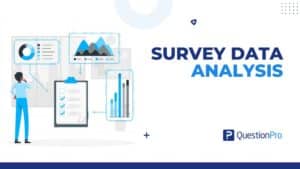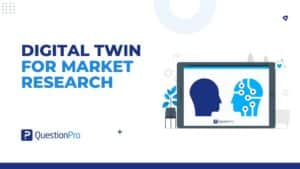
When you’re trying to understand how people think, feel, and act, numbers don’t always tell the whole story. Statistics can show trends, but they can’t capture emotions, opinions, or personal experiences. That’s why we need qualitative evidence that brings context, meaning, and depth.
From shaping better products and services to improving health services research, education, and workplace culture, qualitative evidence helps decision-makers see the full scenario.
In this blog, we’ll explore what qualitative evidence is and how it’s used across industries. Read on to learn how tools like QuestionPro make it easier to gather and analyze these powerful insights.
What is Qualitative Evidence?
Qualitative evidence is information that helps us understand people’s thoughts, behaviors, and experiences. Instead of focusing on numerical data or statistics, it digs into real-life stories, opinions, and emotions.
If you’re trying to understand why people prefer one coffee shop over another, quantitative evidence can tell you that 70% choose Coffee Shop A. But it will tell you that they love the cozy atmosphere, the friendly barista, or the music playing in the background. It gives context and meaning to the numbers.
This type of research evidence usually comes from things like:
- Interviews, where people share their personal views
- Focus groups, where a group discusses a topic together
- Open-ended surveys, where responses aren’t limited to yes or no
- Observations, where qualitative researchers watch how people behave in real situations
Learn More: Qualitative Data Analysis: What is it, Methods + Examples
Why Qualitative Evidence is Important?
Qualitative evidence can help us understand the full story behind an issue, not just the facts but also the feelings and experiences that accompany them.
Here are a few reasons why qualitative evidence is so important:
- It gives people a voice
By listening to real stories and opinions, we can gain insight into how people are truly affected by things like policies, services, or products. This is especially important for hearing from groups that often get overlooked.
- It explains the why
Numbers can tell you what’s happening, but qualitative evidence can tell you why it’s happening. That understanding helps improve programs, fix problems, and make better choices.
- It helps create human-centered solutions
When you know what people actually need and feel, you can design solutions that work better in the real world, not just on paper.
- It adds depth to the data
Used in conjunction with statistics, qualitative evidence provides context. It helps make sense of trends, highlight unexpected issues, and point out things that numbers alone might miss.
Recommended Read: Qualitative Research Methods: Types, Analysis + Examples
What are the Methods to Gather Qualitative Evidence?
There are many ways to collect qualitative evidence, and most of them involve talking to people or observing their experiences. These qualitative methods help you gather rich, detailed information that numbers alone can’t provide.
Here are some of the most common and effective qualitative evidence synthesis methods to gather qualitative evidence:
1. Interviews
Interviews are one-on-one conversations where you ask someone open-ended questions. This lets them share their thoughts, feelings, and experiences in their own words.
For example, if you’re studying why people avoid going to the dentist, an interview can help you hear their fears, past experiences, or financial concerns.
2. Focus Groups
Focus groups involve a small group of people discussing a topic together. A moderator guides the conversation with questions, and the group members build off each other’s ideas.
This is great for exploring shared opinions or seeing how people respond to new ideas or products.
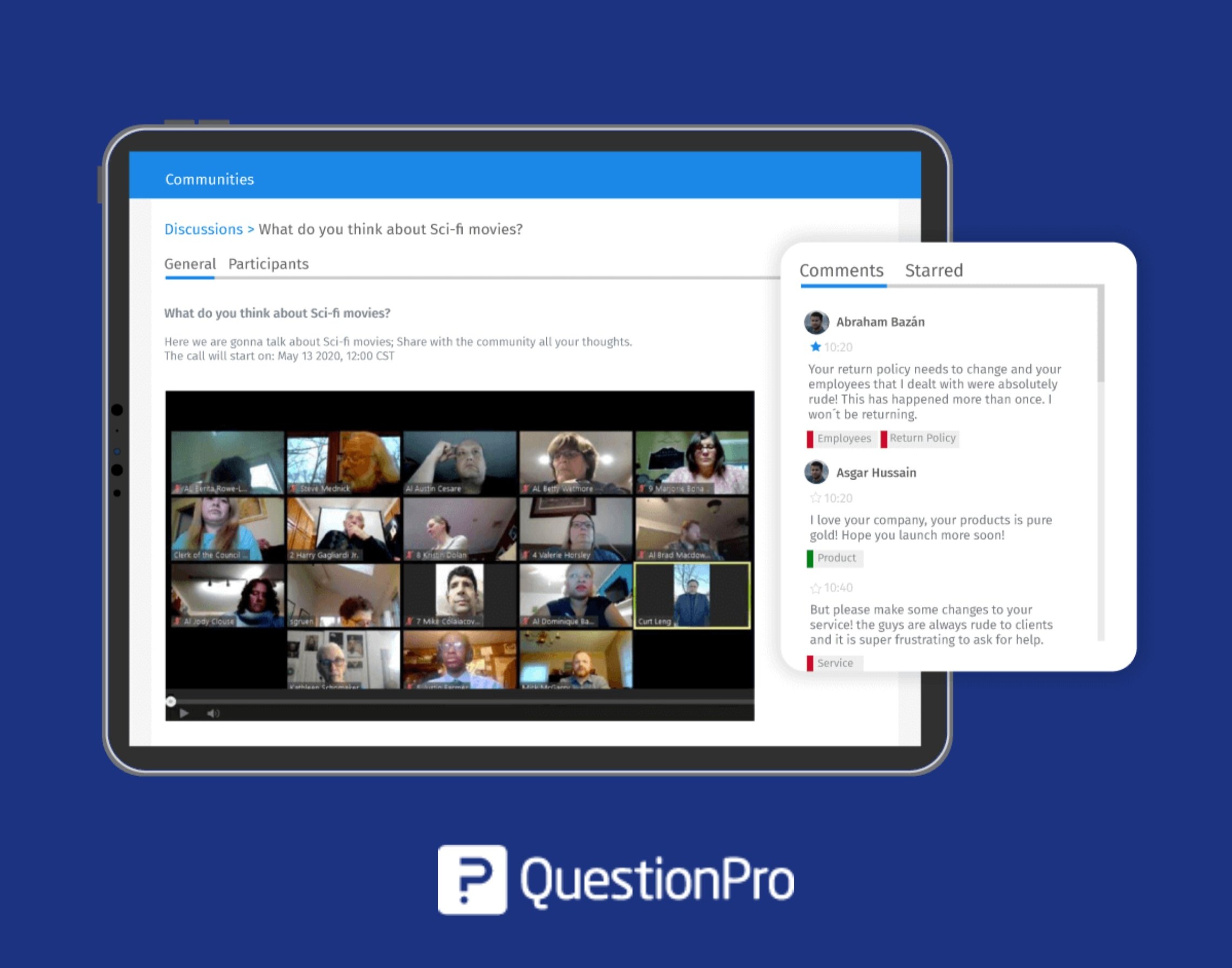
3. Observations
Sometimes, just watching people in real-life situations can give you powerful insights. This is called observation.
For example, watching how customers move around a store can tell you what catches their attention or what they avoid without asking them a single research question.
4. Open-Ended Surveys
Unlike yes/no or multiple-choice surveys, open-ended questions allow people to write freely. These qualitative reviews often reveal honest opinions, personal stories, or suggestions you might not have expected.
5. Case Studies
Case studies are in-depth examinations of a single person, group, or situation. They help you understand unique experiences in great detail.
For example, a case study about a school can explore how a new teaching method helped one class improve by examining the teacher’s approach and the students’ feedback closely.
6. Document or Content Analysis
This method involves examining existing content, such as social media posts, news articles, letters, or videos. You analyze the content to find patterns, opinions, or themes.
Where Can You Use Qualitative Evidence in a Survey?
You might think of surveys as all about numbers and checkboxes, but they can also be a great place for integrating qualitative evidence. In fact, when used correctly, surveys can give you both qualitative and quantitative evidence.
Here’s how and where you can use qualitative evidence in a survey:
1. Open-Ended Questions
These are questions where people can type their answers in their own words, rather than selecting from a list.
For example:
What do you like most about our service?
This question allows people to share their genuine thoughts, feelings, and personal experiences.
2. Follow-Up Questions
After a rating or multiple-choice question, you can add a follow-up like:
Can you explain why you gave that rating?
This gives context to the numbers and helps you understand the reason behind someone’s answer.
3. Comment Boxes at the End
A simple comment box at the end of your survey, like:
Is there anything else you’d like to share?
It can be a goldmine for insights. People often use this space to bring up things you didn’t ask about.
4. Customer or Employee Feedback Sections
Surveys about customer or employee satisfaction often include spaces where people can explain their issues, share ideas, or tell you what’s working well. These personal responses are full of valuable qualitative evidence.
5. Storytelling Questions
You can ask people to describe a situation in detail, such as:
Tell us about a time when our support team really helped you (or didn’t).
These kinds of responses can help you improve your service or product.
What Qualitative Evidence Can and Can’t Do
Instead of percentages or charts, qualitative evidence focuses on words, stories, emotions, and personal experiences. It’s used better to understand human behavior, opinions, and motivations. But like any tool, it has its strengths and limits.
Let’s see what qualitative evidence can do, and what it can’t.
What Qualitative Evidence Can Do
Through qualitative evidence synthesis findings, researchers can identify common themes and better understand experiences across different groups and settings.
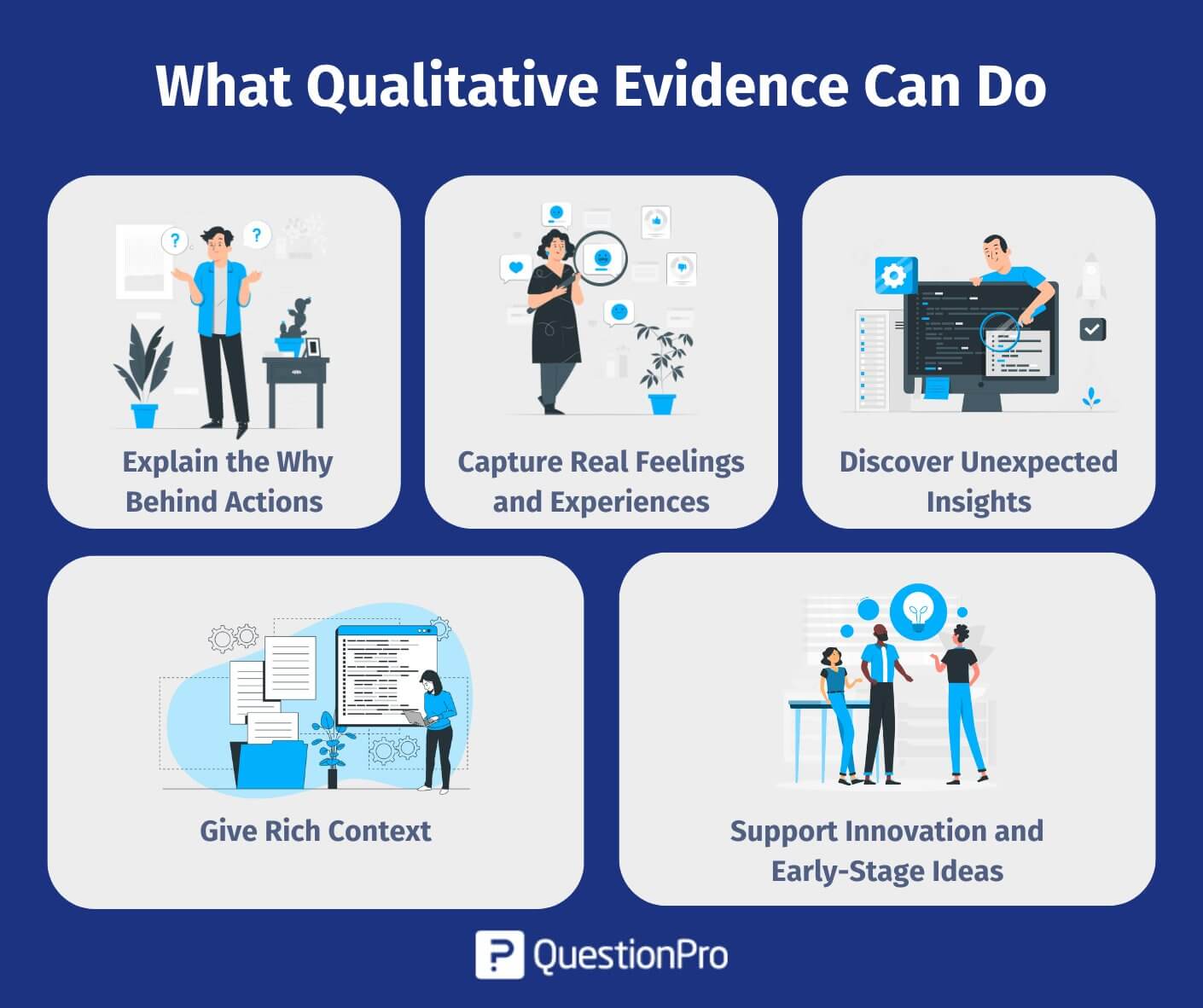
1. Explain the Why Behind Actions
Quantitative research might show that 40% of customers don’t complete a purchase, but it won’t tell you why. Through interviews or open-ended surveys, you can learn things like:
- I didn’t trust the payment page.
- There were too many steps.
- I got confused by the shipping options.
This kind of feedback gives meaning to the numbers.
2. Capture Real Feelings and Experiences
Qualitative synthesis brings out emotions, something numbers just can’t show. Whether it’s a student explaining how they felt in class or a patient sharing their treatment journey, qualitative data adds a human voice to qualitative research studies.
3. Discover Unexpected Insights
Sometimes, people will tell you things you didn’t even think to ask. Maybe a user mentions how a small feature made their day easier or how a tone of voice in a message made them feel ignored. These small details can lead to big improvements.
4. Give Rich Context
Numbers can reveal how many of your employees are satisfied. But what does satisfied really mean? Qualitative feedback can highlight:
- Why do employees feel overworked?
- Why do they love their job?
5. Support Innovation and Early-Stage Ideas
When launching a new idea or exploring unfamiliar ground, qualitative research helps you listen first. Instead of guessing, you can hear directly from people and build something they truly need.
What Qualitative Evidence Can’t Do
Qualitative evidence also comes with important methodological limitations. These include its inability to provide exact numbers, represent large populations, or establish cause-and-effect relationships. Understanding these limits can help you use qualitative data more wisely.
- Give You Exact Numbers
If you want to know how many people feel a certain way, qualitative data won’t help. It’s not about quantity, it’s about depth, not measurement.
- Speak for Everyone
Qualitative data usually comes from smaller groups, like interviews with 10 customers or feedback from a few focus groups. That means you can’t say, “Everyone thinks this way.” It provides insights but not definitive results.
- Be Fully Free from Bias
People may say different things depending on how questions are asked, who’s listening, or the environment they’re in. Also, the person analyzing the data brings in their own perspective. So, while it’s valuable, it’s not 100% objective.
- Prove Cause and Effect
You can’t say, “This caused that” based only on qualitative data. For example, someone might say, “I felt more confident after the training,” but you’d need a larger, controlled study to prove the training led to that change.
- Be Quick to Analyze
Unlike a graph that’s easy to read, qualitative evidence takes time to sort through. You need to read responses, identify common themes, and interpret their meaning. But for many, that extra effort is worth the deeper understanding it brings.
Examples of Qualitative Evidence
Qualitative evidence shows up in everyday life, especially when people share stories, feelings, and personal experiences. Here are some real-life examples that show how powerful this type of evidence can be:
Example 1: Starbucks Improving Customer Experience
What happened?
Starbucks noticed a drop in customer satisfaction in some stores. Instead of just looking at sales numbers or ratings, they started gathering qualitative feedback through interviews and customer comment cards.
What customers said:
- The music is too loud, and it’s hard to relax or talk.
- The baristas seem stressed during rush hours.
What Starbucks did:
They adjusted the store environment, lowered the music volume, and added more staff during busy times. This made the atmosphere more comfortable and boosted customer satisfaction.
Why it matters:
No spreadsheet would have shown that the sound level or staff behavior was the issue. Only people’s real comments helped identify what needed to change.
Example 2: Airbnb Hosts Learning from a Systematic Review
What happened?
An Airbnb host consistently received 4-star reviews but wanted to know how to achieve 5 stars. She began analyzing both quantitative and qualitative reviews, paying close attention to open-ended guest feedback after each stay.
What a guest said:
“The place was clean, but I wish there were more cooking basics—like oil, salt, and coffee filters.”
What the host did:
She stocked the kitchen with those items, added a welcome note, and saw an increase in 5-star reviews.
Why it matters:
Guest ratings alone didn’t say what was missing. It was the personal feedback. The qualitative evidence helped her improve.
Example 3: Nike Listening to Women Athletes
What happened?
Nike wanted to design better sportswear for women. Instead of just studying sales data, they spoke with female athletes from diverse backgrounds.
What athletes shared:
- Most workout clothes don’t consider body types beyond a narrow range.
- I want gear that moves with me, not just looks good.
What Nike did:
They redesigned products based on this feedback and launched collections that were more inclusive in both sizing and function.
Why it matters:
It wasn’t just about how many units were sold. Listening to people’s voices made the brand more inclusive and relevant.
Example 4: Hospital Improving Patient Discharge Experience
What happened?
A hospital noticed patients were getting readmitted within a week of being discharged. Instead of relying only on medical records, they conducted interviews with patients after discharge.
What one patient said:
“I didn’t really understand the instructions. I was too overwhelmed to ask questions.”
What the hospital did:
They created simple, easy-to-read discharge guides and started assigning a nurse to walk each patient through them.
Why it matters:
This emotional and human feedback helped reduce readmissions and improve patient care and maternal and child health, which numbers alone couldn’t explain.
How to Collect Qualitative Evidence with QuestionPro?
If you’re looking to collect qualitative evidence, QuestionPro makes it easier. While it’s known for collecting survey data, it also has powerful tools to gather open-ended, human insights, like thoughts, opinions, and stories.
Here’s how you can do it:
1. Use Open-Ended Questions in Surveys
Instead of only asking multiple-choice questions, include open text fields like:
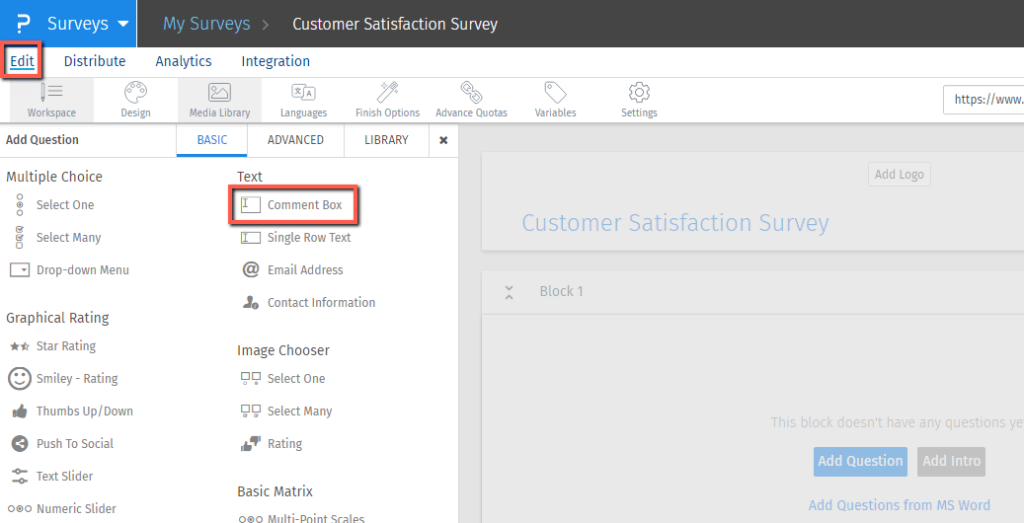
- What did you like most about your experience?
- Tell us how we can improve.
- Please describe your biggest challenge in using our service.
These open-ended questions can help you gather detailed feedback. Insights from qualitative evidence syntheses show that such responses provide a deeper understanding beyond numbers, revealing honest experiences and uncovering themes that improve your service.
2. Conduct In-Depth Interviews Using Video Feedback
QuestionPro lets you collect video responses. This is perfect if you want to see facial expressions, tone, and emotion that text alone can’t capture.
- You can send participants a video question.
- They respond in their own words, on camera.
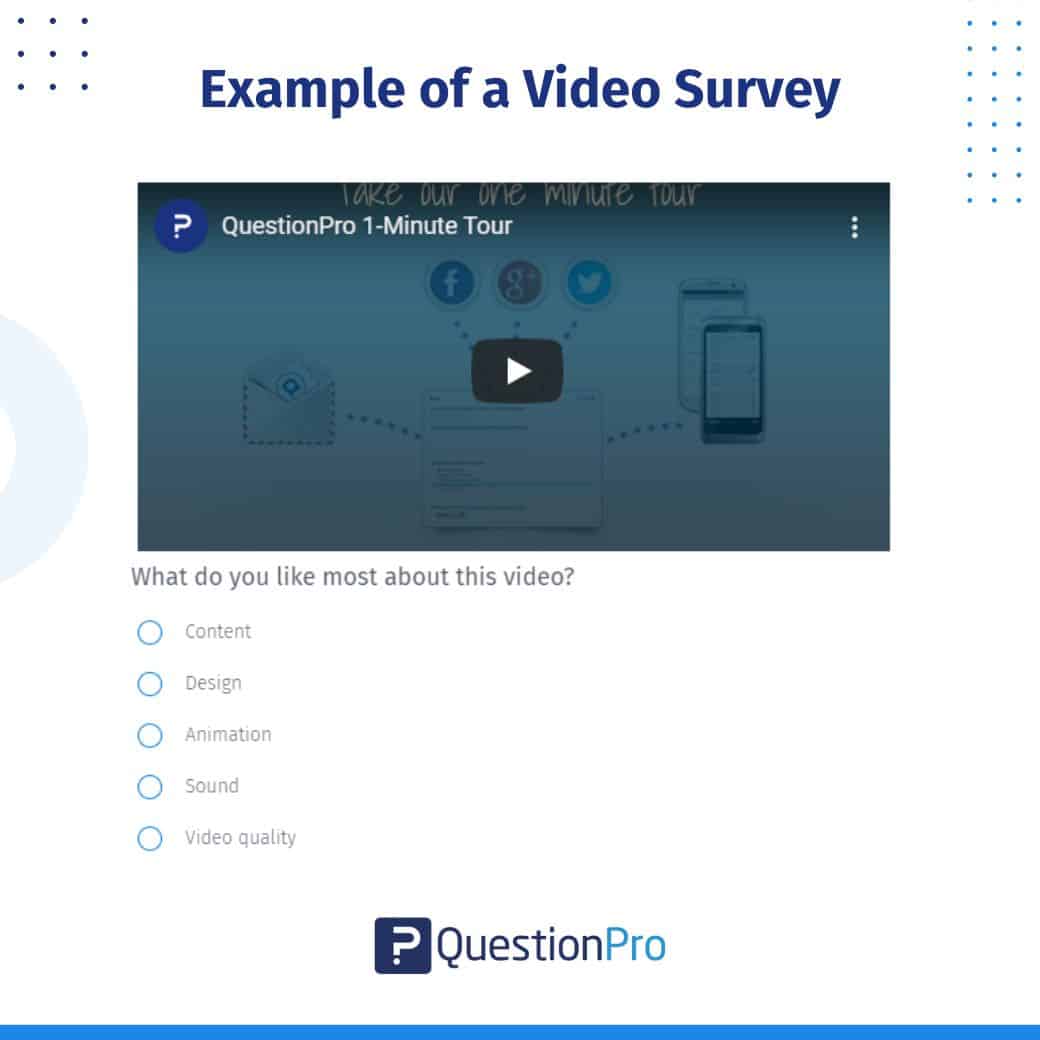
This kind of qualitative evidence gives you real-life insights, especially useful in product testing, education, and health research.
Run Qualitative Polls or Thought Boards
The QuestionPro Communities platform, which serves as an online focus group, enables user engagement with participants through discussion forums. You can ask participants to share ideas, feedback, or opinions in a shared space. Participants can also comment on each other’s responses. It’s like hosting a virtual group conversation, which is great for deep insights.
Tag and Analyze Qualitative Responses
Once you gather your open-text responses, QuestionPro helps you organize them. Use text analysis tools to identify patterns, keywords, and common themes. Tag responses or group similar ideas together to make sense of large volumes of feedback. This turns scattered text into clear trends and themes for decision-making.
Use Qualitative Evidence Alongside Quantitative Data
The real power comes when you mix both qualitative and quantitative data
For example:
- Ask a rating question: How satisfied are you?
- Then follow it up with: Tell us why you gave that rating.
This can provide you with both quantitative and qualitative evidence, leading to better, more human-focused decisions.
Conclusion
Qualitative evidence is more than just stories; it’s a powerful way to understand the why behind human behavior. While quantitative findings and statistics provide measurable facts, qualitative findings uncover the deeper emotions, motivations, and experiences that influence those outcomes.
Whether it’s through interviews, observations, or open-ended surveys, qualitative studies add context, meaning, and depth to research findings. From health systems and education to business and policymaking, this type of evidence plays a vital role in shaping thoughtful decisions that truly reflect people’s needs.
Tools like QuestionPro make collecting and analyzing qualitative evidence easier and more effective. With features such as open-ended survey questions, text analysis, qualitative data analysis, and real-time reporting, QuestionPro enables researchers to go deeper into responses and uncover meaningful patterns. It’s a valuable platform for anyone looking to capture the voice behind the data collection.
Frequently Asked Questions (FAQs)
Answer: While quantitative data focuses on numbers and statistical analysis, qualitative evidence captures context, emotions, and deeper meanings behind people’s actions. For example, ratings are quantitative, but written feedback is qualitative.
Answer: Qualitative evidence helps uncover the why behind behaviors. It adds depth to numerical trends and supports more informed, human-centered decisions, especially in areas like customer experience, healthcare, and education.
Answer: Common sources include interviews, focus groups, comment sections, open-text survey responses, and social media conversations. These offer rich insights not found in standard numerical data.
Answer: Examples include customer reviews, employee feedback, interview transcripts, diary entries, focus group discussions, and field notes. All of these provide context-rich, descriptive insights.
Answer: Yes, qualitative evidence plays a critical role in healthcare by capturing patient experiences, provider perspectives, and contextual factors that impact care quality and outcomes.






